Display Logic
« Back to Glossary IndexQuick Summary
Display logic enhances form efficiency by showing or hiding fields based on user input, improving user experience, data accuracy, and conversion rates. By using this feature, you can create smarter, more engaging forms. Learn how to implement display logic with Growform, and explore more tips for optimizing forms on our blog for better lead capture and conversion.
Streamline Your Forms with Display Logic for Higher Engagement
If your forms are frustrating users and causing them to abandon your site, it might be time for a redesign. Most times, you might just be filling your forms up with more fields than your leads need. Display logic makes forms smarter by showing or hiding fields based on user input.
But what if you’re not sure how to use it?
Our Growform guide will help you understand the ins and outs of display logic, from how they work, to how you can use them. Let’s take your forms from frustrating to flawless!
Why Listen to Us?
Our multi-step forms have a consistent record of giving increased conversion rates for clients like BeMarketable. With features like conditional logic and 300+ integrations, Growform enhances lead quality and management.
Users have praised its effectiveness in boosting lead volume and improving data collection.
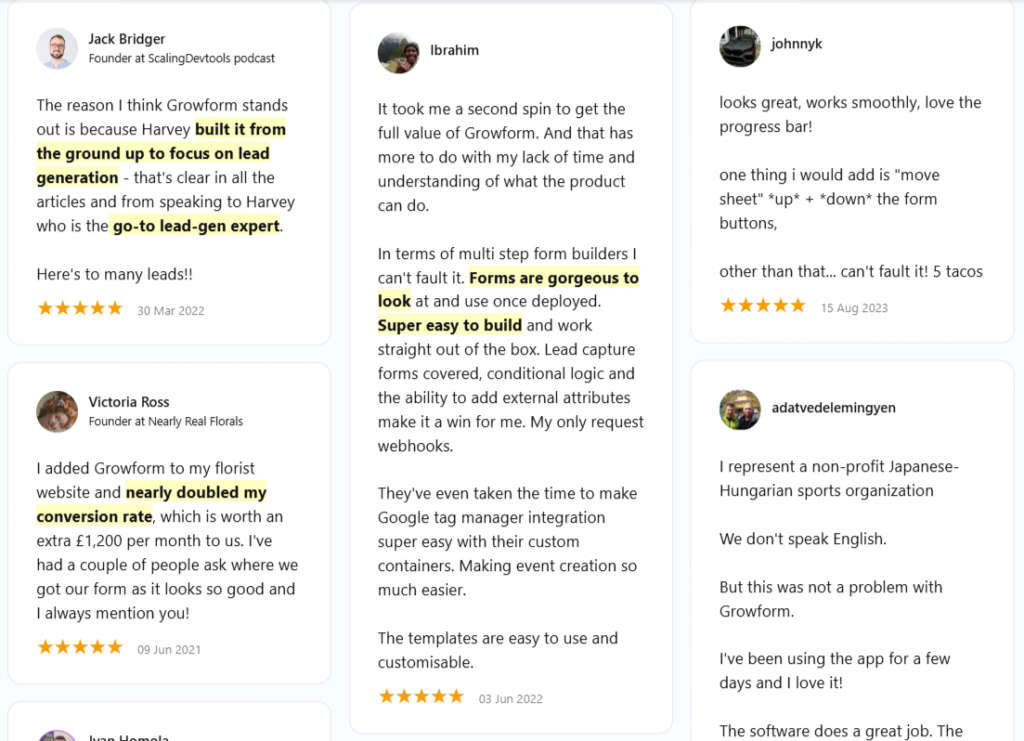
What Is Display Logic?
Display logic is a feature commonly used in surveys, forms, and marketing automation that controls the visibility of certain questions, fields, or content based on previous responses or actions. Essentially, it allows you to show or hide specific parts of a form or survey depending on how users answer previous questions, ensuring that the experience is more personalized and relevant.
By adapting in real time, display logic prevents unnecessary or repetitive questions, keeping users engaged. It works by setting conditions that trigger when specific responses are given, making forms smarter and more efficient.
This feature is particularly useful for multi-step forms, surveys, and lead generation forms, where personalization improves accuracy.
Note that while display logic is often referred to as a feature on its own, it is actually a subset of conditional logic. Conditional logic governs how different parts of a form or survey behave based on user input, and display logic specifically focuses on showing or hiding fields based on those responses. In other words, all display logic is conditional logic, but not all conditional logic is display logic.
You can use our conditional logic feature to implement display logic and create excellent, adaptive forms with zero coding.
When to Use Display Logic?
Display logic is ideal for forms, surveys, and processes where personalized experiences can enhance efficiency and accuracy. Use it to:
- Streamline multi-step forms by displaying only relevant fields
- Qualify leads by adjusting questions based on responses
- Personalize surveys and feedback forms based on prior answers
- Adjust pricing or quotes uniquely based on user selections
Display Logic vs. Skip Logic
Display logic and skip logic both improve form efficiency by customizing the user experience, but each in its own way. Key differences include:
- Interaction Style: Display logic typically adjusts visible fields as users interact, whereas skip logic moves users to a different section or page.
- Data Collection: Display logic ensures all necessary data remain within a single form flow, while skip logic may bypass sections entirely, reducing data capture.
- Complexity & User Experience: Display logic provides a seamless, intuitive experience, while skip logic can feel abrupt or disjointed.
Benefits of Display Logic
Improved User Experience
Display logic streamlines forms by removing irrelevant questions, reducing friction, and improving user flow. By adapting in real time, it keeps forms concise and engaging, minimizing abandonment. This leads to a more intuitive experience that aligns with user expectations.
Key advantages:
- Less cognitive load: Users focus only on relevant fields, preventing overwhelm (and boredom).
- Faster completion times: Shorter, responsive forms encourage higher engagement.
- Seamless navigation: Eliminates unnecessary steps, making interactions feel natural.
Higher Data Accuracy
Display logic improves data accuracy by ensuring users only see and answer relevant questions. This reduces input errors, guesswork, and skipped fields, leading to cleaner, more actionable data. When forms adapt well, businesses collect more precise information.
Irrelevant fields can be a bummer, increasing drop-offs and inaccuracies. By structuring forms intelligently, you get just the data you need, leading to better insights, more effective segmentation, and improved decision-making. This also ensures marketing and sales teams work with high-quality leads rather than incomplete or misleading data.
Increased Conversion Rates
Forms that feel long or irrelevant can easily drive away your leads. Display logic shortens the user’s journey by making completion faster and more intuitive. This directly improves lead generation by keeping users engaged and reducing drop-offs.
For instance, you can use display logic in our customizable multi-step forms to boost conversions. By showing only certain relevant questions, you can reduce friction and keep users focused. A streamlined experience results in more completed forms and well-qualified leads.
How to Implement Display Logic
1. Define Logic Conditions
Start by mapping out the form’s structure and identifying where to apply display logic. Consider which questions depend on previous inputs and which fields should remain hidden until triggered.
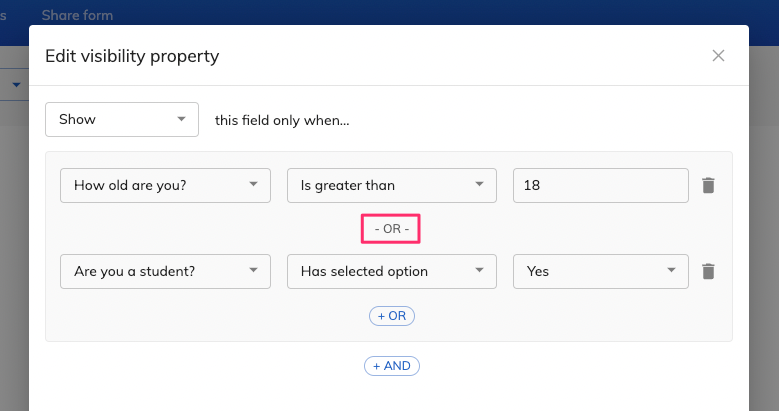
Clear conditions prevent unnecessary complexity and ensure a smooth user flow.
Key considerations when defining logic:
- Data relevance: Only show fields that contribute to meaningful responses.
- User journey: Keep the flow intuitive, preventing unnecessary cognitive load.
- Error handling: Ensure conditions don’t conflict or create dead ends.
With our easy-to-use form builder, you can create complex conditions, ensuring forms adapt very well. Customize user journeys in real time, guiding respondents through a seamless, intuitive experience while capturing precise, high-quality data.
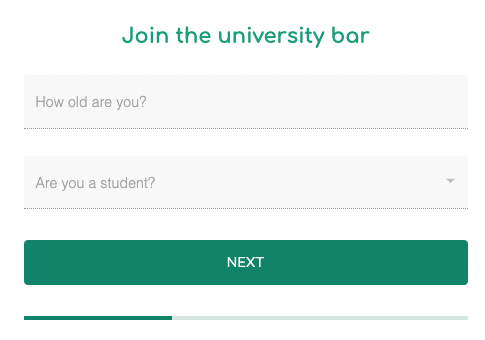
2. Apply Conditional Rules in Form Builder
Once you’ve defined the logic conditions, apply them using a form builder, like Growform, that supports field adjustments. Configure rules that trigger fields based on user input, ensuring seamless transitions between sections.
With our form builder, you can easily assign display logic by selecting conditions in the form builder’s interface. No need to be tech-savvy or a coding genius, our forms are completely accessible for marketers and non-technical teams.
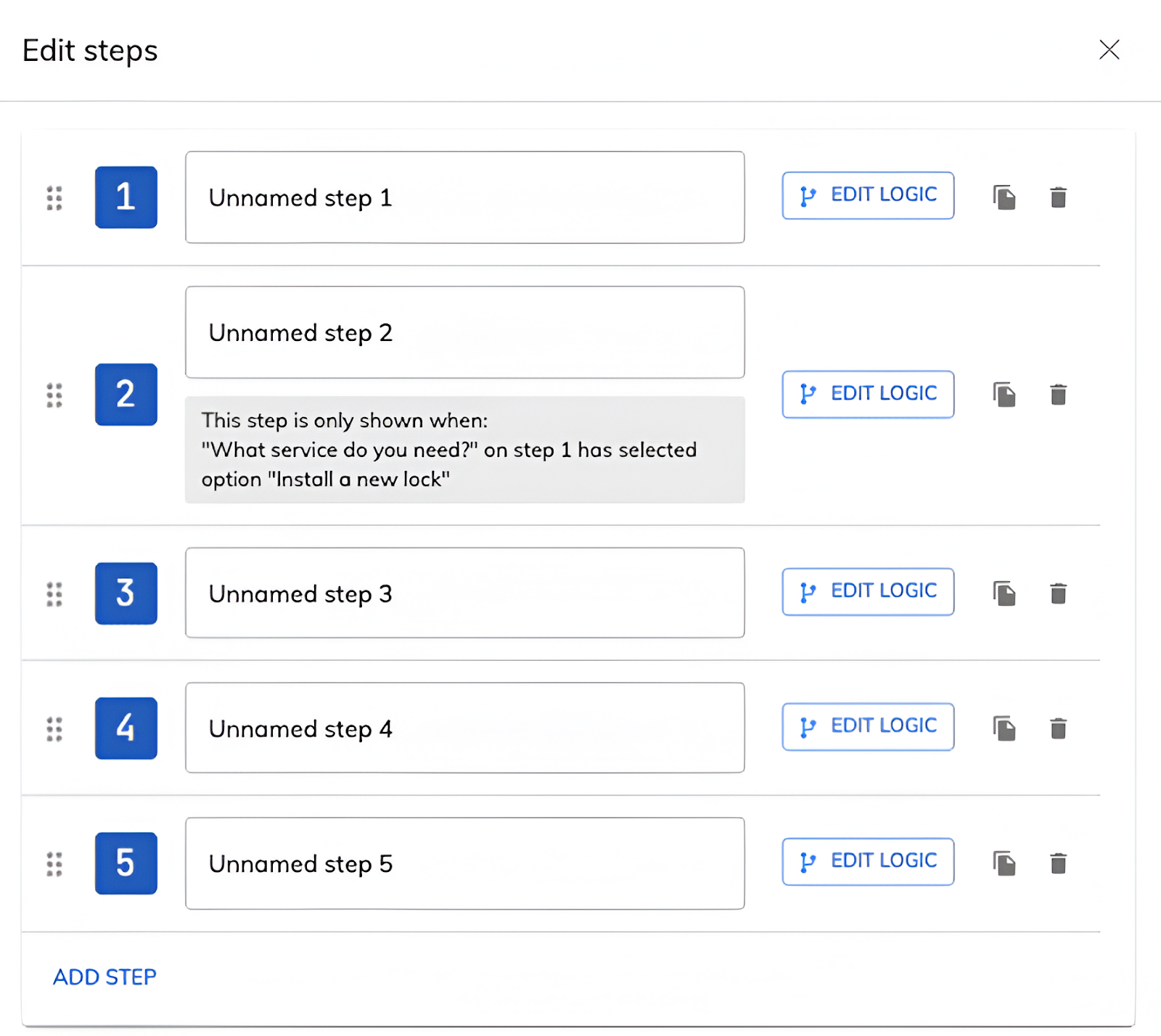
Best practices for setting conditions:
- Use clear triggers: Ensure logic rules activate only when necessary.
- Minimize dependencies: Avoid excessive conditions that complicate user flow.
- Test combinations: Confirm that multiple logic paths work without conflicts.
3. Test & Optimize
After setting up display logic, test how users interact with your form to ensure it delivers a seamless experience. Preview different user paths to identify errors, like hidden fields appearing incorrectly or conditions failing.
Address logic conflicts before deployment.
Key testing strategies:
- Simulate real user inputs: Test multiple response scenarios.
- Check mobile responsiveness: Ensure logic functions across devices.
- Monitor drop-off points: Identify where users abandon forms and adjust.
- A/B testing: Test variations of your form with different logic settings to measure which version drives better engagement, conversion rates, and completion times.
At Growform, we provide a built-in testing environment, allowing you to validate logic setups, A/B test form variations, and refine conditions based on real-world interactions.
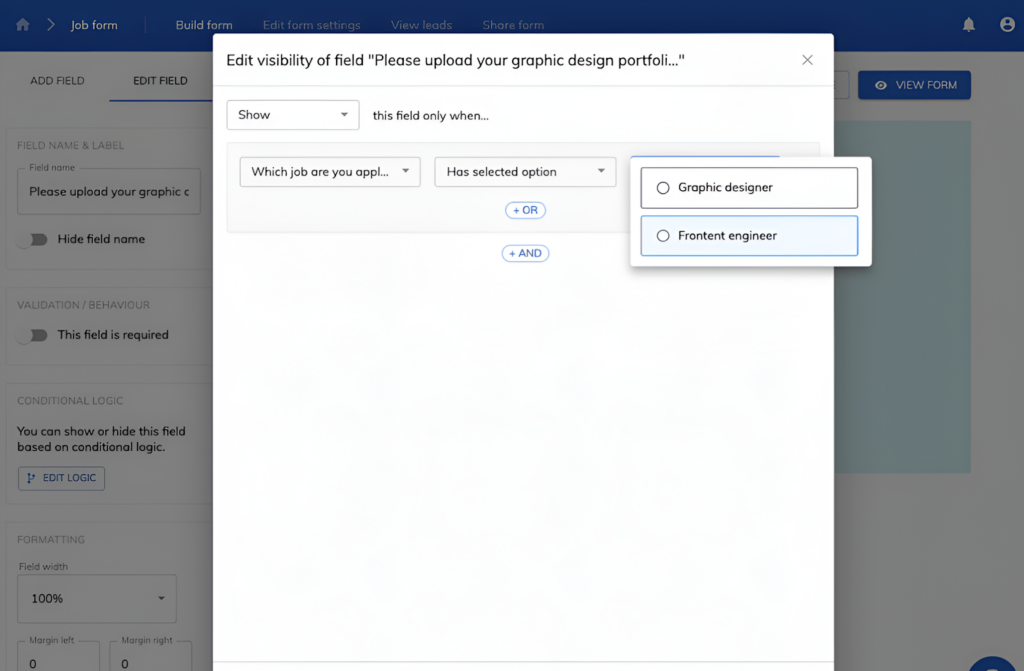
Simplify Using Display Logic with Growform
Implementing display logic can be one of the smartest moves you make to improve your lead capture forms. And a well-optimized form builder like Growform makes it seamless and effective.
Our intuitive platform allows businesses to implement display logic without coding. Its dynamic conditional logic feature ensures that forms adapt as your leads fill in their answers, leading to higher engagement and qualified leads.
So, what are you waiting for? Sign up to our 14-day free trial and start building smarter, high-converting forms today.
Recent Posts
- Your Guide to Using Webflow Form Builder Effectively
- Top 5 Lead Capture Form Examples That Can Boost Your Conversions (2025)
- What Is an Elementor Multi-Step Form & How Does Growform Improve It?
- We Review The Best Microsoft Forms Alternatives for Better Customization and Control
- Here’s Our Review of the Best Form Builders For WordPress Sites
